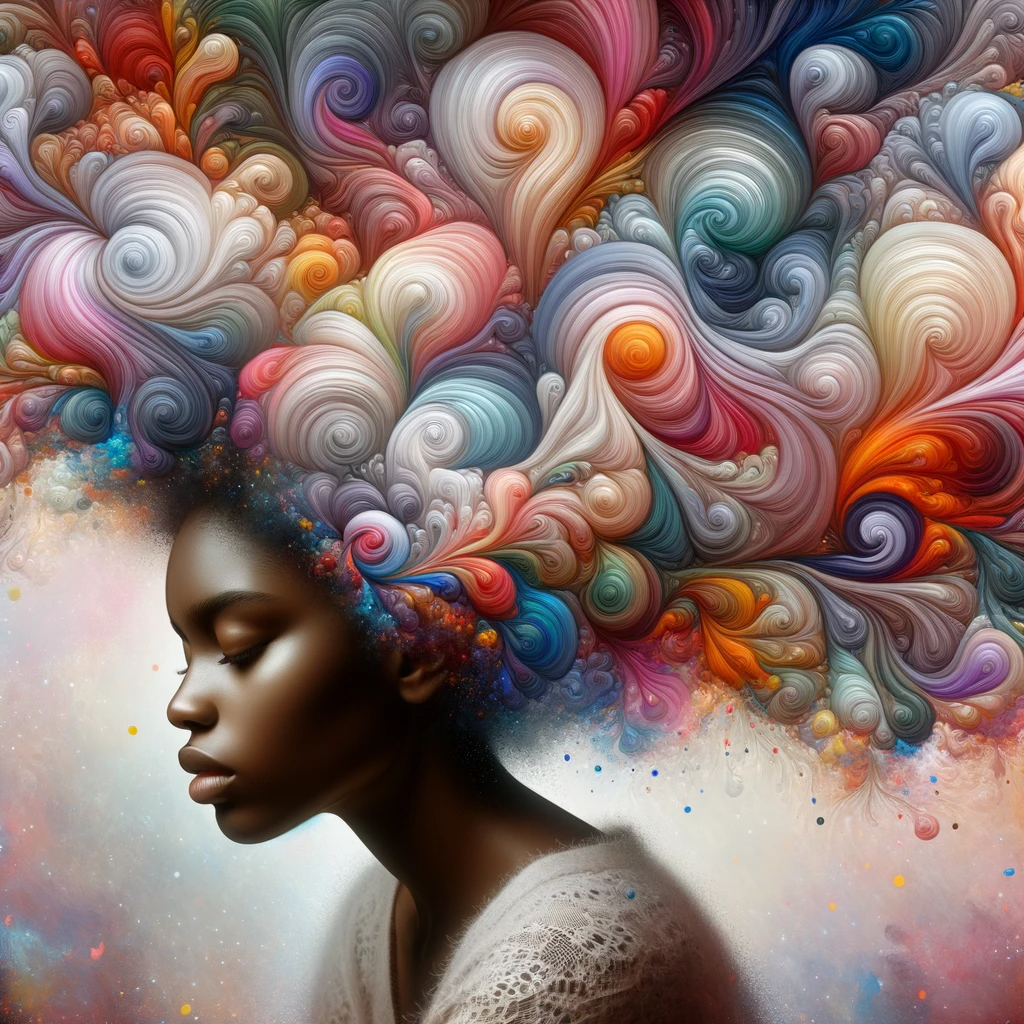Once spoken about in silent tones, mental health has become a focus of powerful public discourse in recent years (Madani, 2020). As societies become more aware of the complexities of mental well-being, especially among the young generation, there is a pressing need for innovative tools and techniques to operate in this environment (Colizzi et al., 2020). This is where the fascinating confluence of technology and psychology comes into play with the deployment of DALL·E 3 as a potential therapeutic aid. Let’s explore how DALL·E 3 could be a conduit, enabling young minds to visualise and understand their emotions.
Understanding DALL·E 3 is the first step in appreciating its therapeutic potential. Developed by OpenAI, DALL·E 3 is an AI model that can bring images from textual descriptions to life (Acharya, 2023). It acts as a bridge between the abstract world of words and the tangible discipline of visuals. The real power of this technology isn’t just in the images it produces, but in the doors it opens for mental health interventions.
Going deeper, we encounter that the roots of using visuals for therapeutic purposes trace back to established practices like art therapy (Hinz, 2009). Within this discipline, creating, be it through drawing, painting or sculpting, is seen as a means for individuals to express and navigate their emotional landscapes. Externalising emotions often equips individuals to understand and manage them (Hinz, 2009).
Incorporating these principles, DALL·E 3 might be a promising therapeutic tool. Young individuals can articulate their emotions or state of mind to DALL·E 3, which responds by crafting a visual representation, giving form to the abstract. This process not only aids in externalising feelings but also ensures a nurturing, non-judgmental environment. There’s an implicit promise that this AI won’t critique or misconstrue one’s feelings, allowing for a genuine and unhindered expression.
Furthermore, these visualisations can act as bridges, facilitating better communication between individuals and therapists (Rubin, 2010). For those who struggle with putting their feelings into words, these images can express their emotional state. Over time, and with consistent interaction with DALL·E 3, these visual outputs can chronicle an individual’s therapeutic journey, serving as markers of their progress and evolution.
Bibliography:
Acharya, A. (2023, September 21). OpenAI’s DALL-E 3 Explained: Generate Images with ChatGPT. Encord. https://encord.com/blog/openai-dall-e-3-what-we-know-so-far/
Colizzi, M., Lasalvia, A., & Ruggeri, M. (2020). Prevention and early intervention in youth mental health: Is it time for a multidisciplinary and trans-diagnostic model for care? International Journal of Mental Health Systems, 14(1), 1–14. https://doi.org/10.1186/s13033-020-00356-9
Hinz, L. D. (2009). Expressive therapies continuum: a framework for using art in therapy. Routledge.
Madani, D. (2020, December 20). Mental health care has become even more crucial with the traumas of 2020 — but resources are stretched thin. NBC News. https://www.nbcnews.com/news/us-news/mental-health-care-has-become-even-more-crucial-traumas-2020-n1251755
Rubin, J. A. (2010). Introduction to art therapy: sources & resources. Routledge.


Putting generative AI to use as a therapeutic tool is an exciting notion, and I enjoyed reading your argumentation for the added benefits for especially younger generations. It would introduce a new dimension for people to express themselves in mental health interventions. One advantage you stated was that people who are unable to effectively convey their emotions through words, can now do that through visuals. However, to get a visual from Dall E 3 that would accurately describe a person’s emotions, the person would have to provide a prompt to the tool in words. Therefore, I would argue that for Dall E 3 to effectively convey a person’s emotions, it is still dependent on how accurately the person can describe their emotions in words. Do you believe this subtracts from the value it might deliver in mental health interventions?
Thank you for your thoughtful insights, Quinten. You’ve highlighted a critical aspect of the DALL·E 3 model’s operation. Indeed, the visualisation’s efficacy hinges on the clarity of the input prompt. However, the critical difference with DALL·E 3’s use in therapy might be the interpretative breadth it provides. While verbal communication in therapeutic settings often requires precision and can be daunting for some, even a broad or abstract textual prompt to DALL·E 3 can yield a range of visual interpretations. This means that while a person might not have the exact words, their general feelings or mood can still be transformed into a visual medium. The visual output can then be a starting point for further discussion, refinement, and understanding in the therapeutic context. So, while there’s an inherent reliance on textual prompts, the model’s versatility could still offer significant value in capturing and exploring a spectrum of emotions.